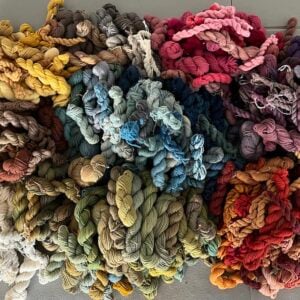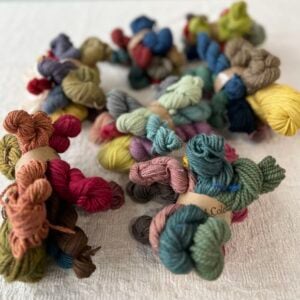Sunday Visit is our interview series where we speak with an incredible maker in our community and learn about what makes them tick. Katrina Rodabaugh is an author and artist working at the intersection of sustainability, craft, and design. Using visible mending, natural dyes, and textile redesign in fashion, art, and home. She combines her training in sustainability with her experience in fiber arts to build eco-friendly solutions for modern lives. We sit down with her to learn about her practice.
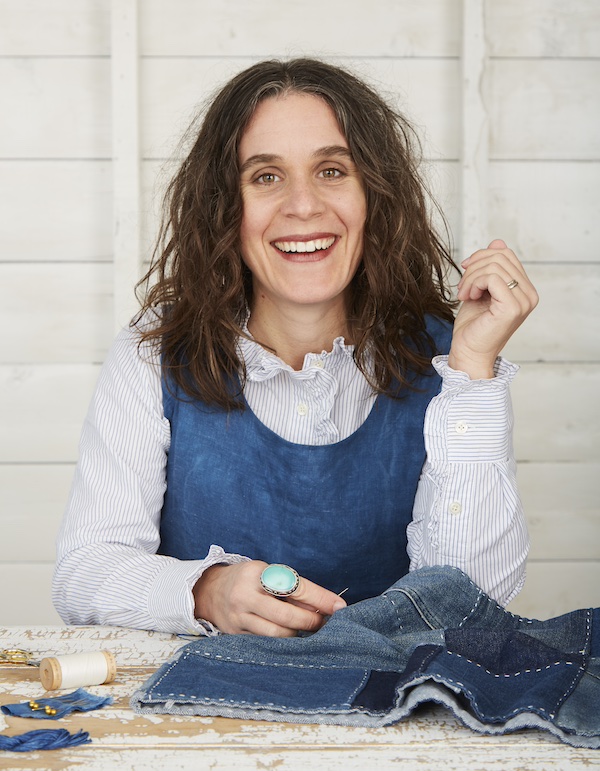
Katrina, you have been a friend of BC for a long time. Tell us a little bit about your journey into the world of mending. I’ve read that the Rana Factory collapse was a catalyst for your practice. Can you tell us a little bit about how that informed your mending journey?
Hi Cara! I’m thrilled to talk with Botanical Colors—thanks so much for having me. Yes, I started my sustainable fashion project, Make Thrift Mend, in August 2013. It was just four months after the Rana Plaza Garment Factory had collapsed and soon after I read Elizabeth Cline’s book, Overdressed, and read everything I could find about Natalie Chanin’s work with Alabama Chanin. These influences met at a fiery intersection in my brain and I realized that I wanted to participate in creating solutions. I wanted to push myself to shift my fashion habits to be in better alignment with my sustainable values. And I could do this through my background in the arts and work with fiber.
I declared a year-long fashion fast and didn’t buy any new clothing for that first year. Instead I focused on making simple garments, buying secondhand, and mending what I already owned. I quickly started to prioritize natural fibers in any second hand purchases so those garments could be dyed with foraged plants from nearby my apartment, at the time, in Oakland, CA. The first year passed and I knew I’d only scratched the surface. Then I committed to a second, third, fourth, and then fifth year until I felt like I didn’t need the fast anymore—slow fashion had become a way of life. I altered the parameters each year to make it more realistic after that first year. Slowly, year by year, I added in new clothes that were handmade by the designer, organic, locally-made, and/or made by companies that prioritized sustainability.
We moved to a small town in Upstate NY and I needed a winter coat, my kids suddenly needed warm boots, and then I needed a bathing suit my toddler couldn’t pull down when we were at the community pool! But each time I just tried to slow down and find the best solution. Not perfect, just best. In 2018, I published my first mending book, Mending Matters, and it felt like this momentous, five-year anniversary. I learned so much about what isn’t available for folks depending on budget, aesthetic, weather, geography, size, profession, lifestyle, etc. There’s no one-size solution to sustainable fashion. The more solutions, the merrier. When I started it was much harder to find secondhand clothes online, source organic undergarments, or find ethically-made shoes. So much has changed in twelve years. That’s inspiring.

You also grow natural dyes, What initially drew you to them? Can you tell us a little about that “aha” moment for you?
Yes! I love growing and foraging for natural dyes. I like to use whole plant dyes, whenever I can. I love knowing more about the plant before I dye with it, if possible. When I first went on my fashion fast I realized that I could add more personal creativity to secondhand garments if I could shift their color over time. White garments could become yellow, then yellow garments could become blue, then blue garments could become navy or brown. It was magical! And it really connected me to the fiber content in my clothing because I’d be scouring secondhand shops for silk blouses, linen dresses, cotton button-downs, and wool sweaters. It felt like this incredibly intimate and meaningful way to connect my relationship to plants with my wardrobe. I foraged for dye plants a bunch when we lived in Oakland, CA. Now that we live in Upstate NY I still forage but also have a big dye garden. It still feels like magic.
You also hold an MFA in creative writing. You are a true polymath. How do all of your passions feed into each other? Can you elaborate a little on how you get into your creative headspace?
I just stopped fighting it. Finally. I just turned 48-years-old in January and I think it took me about 35 years to embrace that I’m truly interdisciplinary. When I was in graduate school I felt so much pressure to either prioritize poetry, my major, or prioritize book arts where I was a teaching assistant and getting funding for my degree. I hated feeling like I had to choose—writing engages my head and handcrafts engage my hands. I needed both. I still do. It was my book arts teacher who suggested I was an informally-taught fiber artist. My mom was a hobbyist crafter and I grew up at the side of her sewing machine. This was a really important moment in my creative work where someone with a lot of power, my graduate school professor, suggested that my informal, rural, self-taught, handed-down education in the arts was relevant in my work. And in the world. It meant everything. It was so validating. I started letterpress printing poems on recycled fabric, turned those prints into dresses, hosted a huge installation with dancers and musicians and declared myself a fiber artist. Thank goodness! Creativity just floods me—it always has. My brain is an active and curious place. Making the time for my creativity, particularly as a working mom with two young kids, is the bigger challenge.
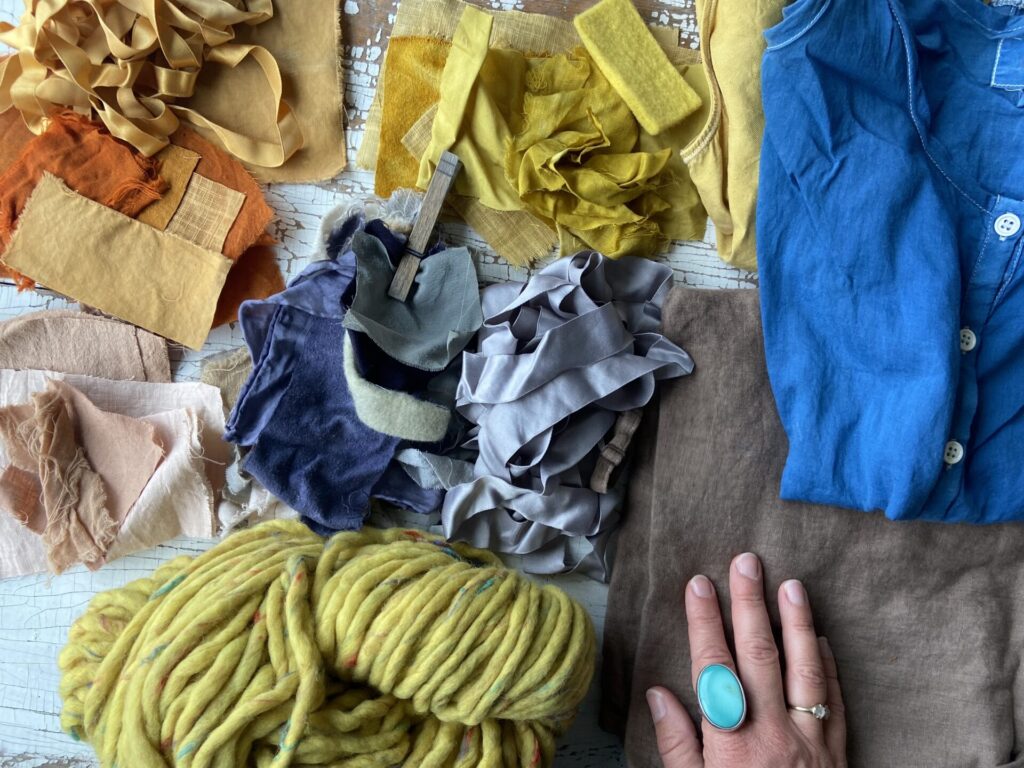
Do you have any rituals around mending and making? If so, can you tell us what they are?
I wish I had more rituals! My life is so unpredictable right now with two kids and running a small business. I just try to take each day, or week, as it comes. I try to make creativity easier. All the time I try to make it easier. I leave a knitting project by the couch where I watch movies with my kids so I can grab it at a moment’s notice. I leave a mending project out on my studio table so I can just pick up a textile and do some stitching. I try to write every day, by hand or by computer. I try to walk 4-5 times a week because that helps me to connect with local plants and work through studio challenges.
My dye work is very seasonal. I have a dye studio in our garage but it’s not heated, my water source is a hose. I plant in the late spring, harvest and dry plants all summer and fall, and do most of my dyeing in the late summer and all through autumn until my hands are too cold. It’s magical to collect goldenrod from the neighbor’s field, dye textiles outside the garage, hang the dyed garments on the clothesline by the pines, and then look up to see the Canada geese flying overhead. It nourishes me for the long winter ahead.
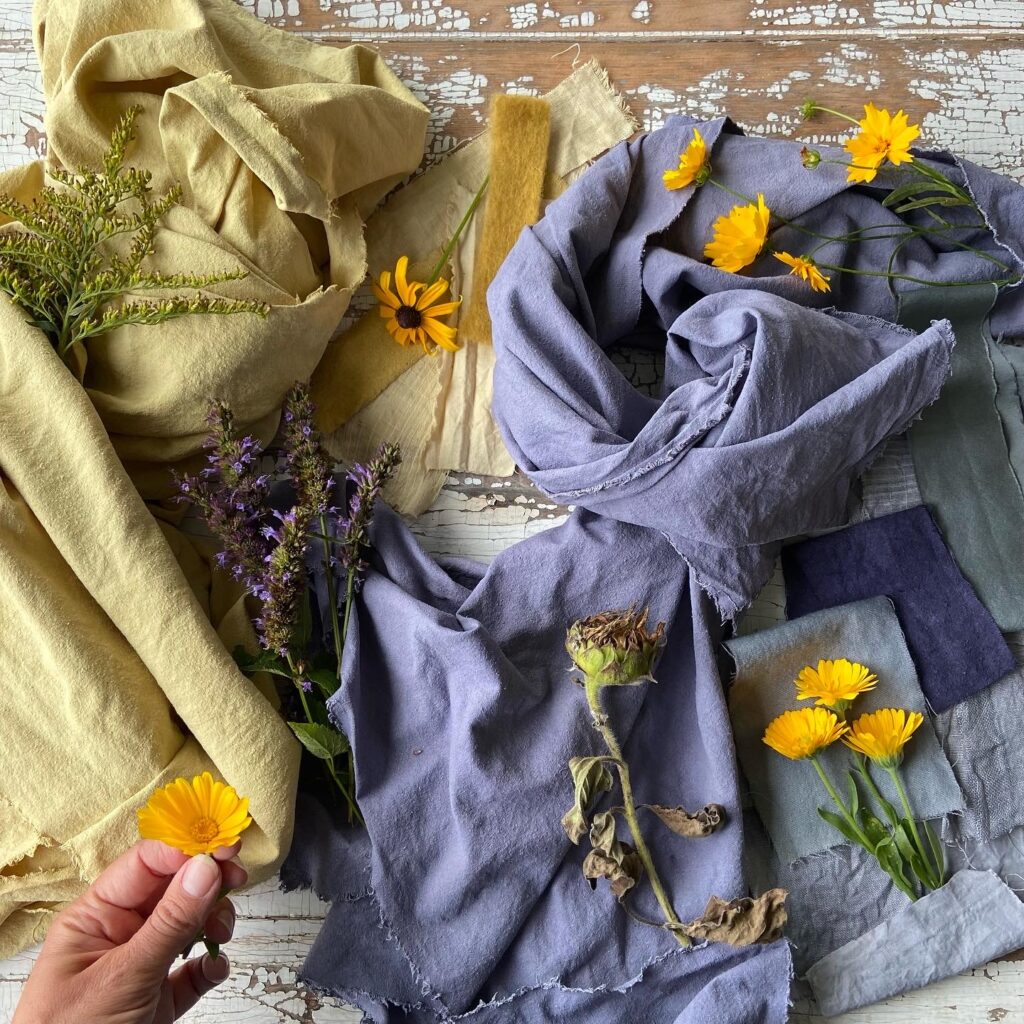
A silly question, but one of my favorites. If you had any advice for little Katrina, what would it be?
Oh, gosh. Little Katrina had so much to handle! I just want to hug her. Mostly, I’d tell her that adolescence would be the hardest time of her entire life. Ever. It would only get easier once she gained independence. She would leave that tiny town and move to big, beautiful cities. She’d make art! She’d write books! She’d have two great kids! She’d move back to a tiny town and own a 200-year-old farmhouse someday! She’d make a living in the arts even though she had no idea that was possible. And she’d meet the most wonderful, wonderful people along the way. (She’d also marry someone she knew in high school but that part might freak her out!) I’d also tell her to have more fun, care less about the critics, and to trust her gut. Sooner. Like, 1000% trust her gut. Forever. I was an anxious and highly-sensitive kid and I didn’t know that it could be a superpower, working in the arts.
Last song on your playlist please.
Brandi Carlile’s, You and Me on the Rock.
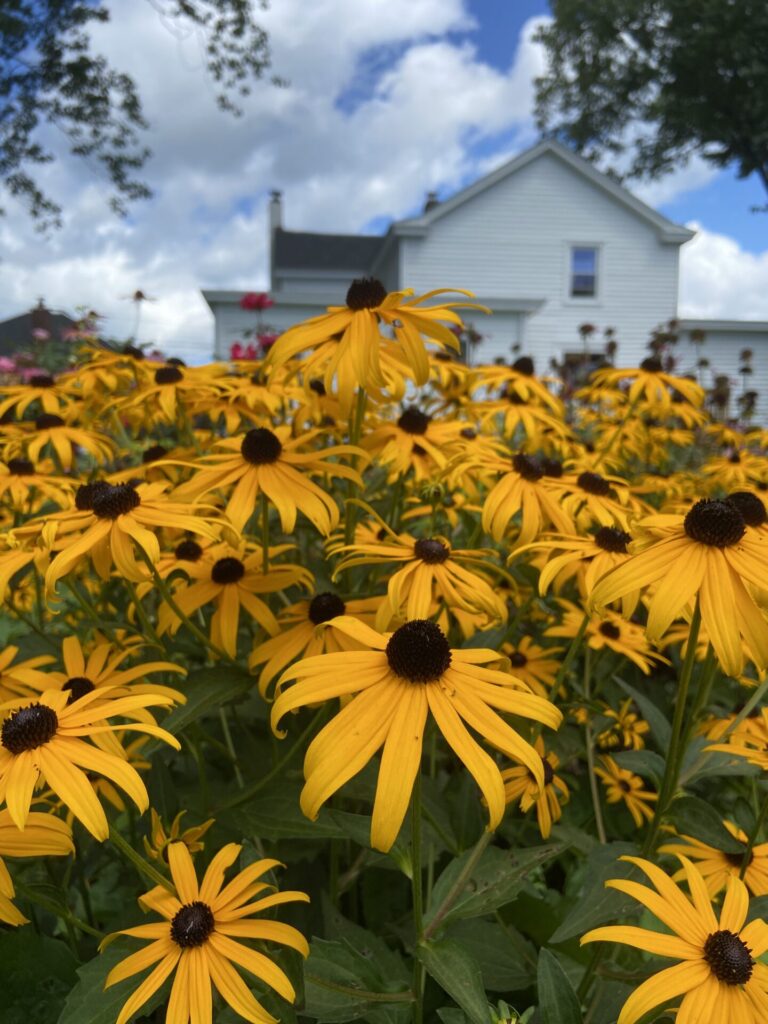
What is next for you? Anything exciting coming up we should know about?
So much is coming up! I built a suite of online classes last year and I’m figuring out how to offer them annually—more like an arts organization has seasonal offers. I’m running my annual mending workshop, ON THE MEND, right now. Then I’ll teach Creative Practice, a new class Sustainable Design for Fashion and Home, and then I’ll teach my natural dyes class, PLANTFOLK this fall. When the Canada geese are migrating. But I’m also thrilled to host my annual summer retreat at my studio August 1-3, 2025. Each year I choose a new collaborator and this year it’s someone very near to Botanical Colors heart and soul! Eh hem. I cannot wait. Lastly, I write my heart out in my newsletters and am always trying to find ways to create community online from social media, to newsletters, to events and classes. No matter what’s happening in the world, I think creative community is a lifeline for most of us and we have to nourish those spaces whenever we can. Make things! Mend things! Just keep making things. Together.

